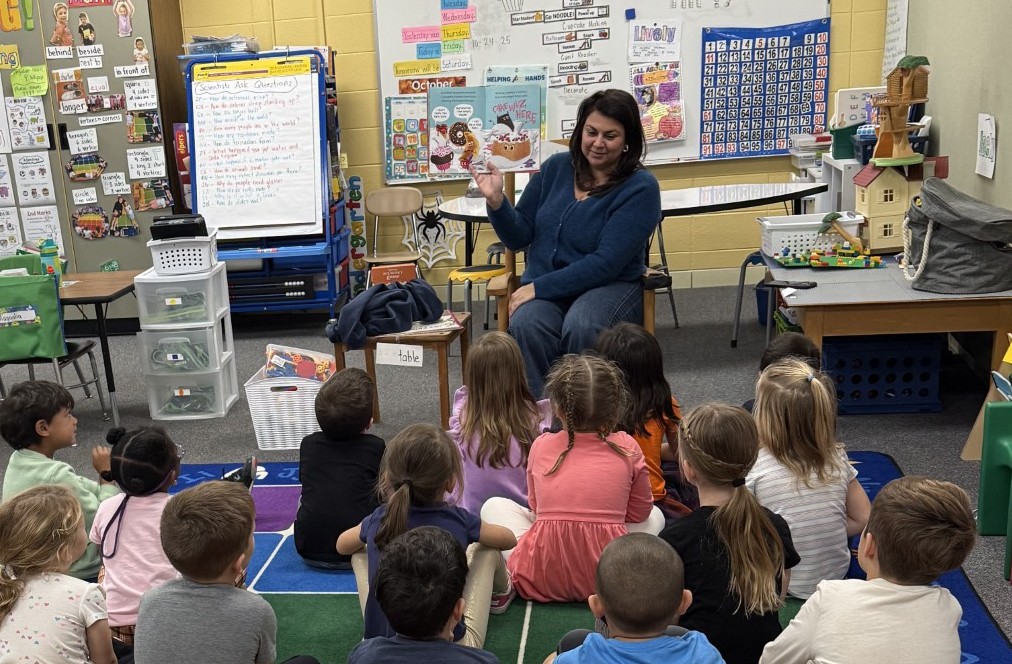How to Promote AI Synergy
Each AI tool has its own benefits, but combining multiple tools together can result in a solution you might not have foreseen before.

With the plethora of AI tools circulating the educational space right now, it can be easy to get swept into one while disregarding the others that exist. One tool may solve an individual problem, but when it comes to solving complicated educational problems, combining multiple AI tools can maximize your chances of success.
Laura Deiss, Curriculum and Instruction Specialist for Region 3 in Victoria, Texas, and Molly Kresta, teacher/instructional tech/grant writer for Louise ISD in Texas, discuss ways to implement AI synergy in your educational work space in order to achieve solutions for complex creative issues.
What AI Synergy Looks Like
If you’ve worked in a corporate environment, you might have heard of “synergy,” which is generally used to describe an activity that engages multiple parts to create a well working collective whole. This can mean people or technology, so long as all the separate parts work together.
In this case, if you remove Janet from Accounting and put in MagicSchool, you have AI synergy.
“AI makes [things] a little easier,” says Deiss. “So now let's start thinking about how to leverage it.”
Why isn’t AI tool synergy more prominent in the classroom?
“You think people will figure it out on their own but in the classroom, you just get tunnel vision, and so lots of teachers don’t think too much [about other tools they could be using],” says Kresta. “What I wanted to show [teachers] was there is not a one-trick pony with the AI stuff.”
Tools and ideas to transform education. Sign up below.
When it comes to using AI, thinking outside the box can help teachers better understand how to combine the use of certain tools to create a favorable outcome.
How to Achieve AI Synergy
While it might sound easy in concept, a teacher might not be able to properly focus on multiple technologies simultaneously. Given the constraints and pressures that accompany the profession, they might stick to whatever tools they happen to use to get whatever solutions they can. However, a shift in mindset can help achieve AI synergy.
As Kresta says, putting the time into training teachers on AI tool use will pay off in the end.
“When you can find the time, when you can sit down and talk to [teachers] and show them [AI tools], then they’re more open to it,” says Kresta. “But you really have to sit down and talk to them. Teachers are too busy. You’ve got to find time to actually sit down and say ‘Here’s an idea.’”
So what would a good example of AI synergy look like?
“One of our science teachers came down and was asking me something completely unrelated,” says Kresta. “But he was using MagicSchool to do some things. I said, ‘After you did that, what if you did this? If you smash [different AI tools] together, take all these things I’ve taught you and put them together…’ You can save a teacher time and get students more engaged.”
In another example provided by Kresta, AI synergy was used to help transform a lesson on MLA into a multilingual experience and an interactive slideshow.
“For this lesson,” says Kresta, “I found a website with a great overview of MLA Style. I copied this into Gamma and it created the presentation (MLA Citations A Comprehensive Guide). I then downloaded the presentation as a .pdf and then used Google Translate to make a Spanish translation to distribute to my ELLs (MLA Citations A Comprehensive Guide Spanish). I also printed out copies for my students who require copies of notes as an accommodation. Once this was complete, I opened Curipod and used the Curify My Slides feature to add interactive slides between concepts (MLA Basics). This took 15 minutes to complete.”
The act of packaging AI tools together to solve a problem can vastly improve efficiency and reduce stress.
How to Get Over the AI Hump
Many are still struggling with the question of AI use in school, with some teachers on the fence about using it themselves. The first step of getting teachers on board with AI is finding out who is willing to take the plunge.
“It depends on who you talk to,” says Kresta. “I have a teacher across the halfway from me who is the most amazing teacher. I cannot get them to turn on a computer in their classroom except to put grades in. That’s it. So it depends on who you’re talking about and what they teach for the most part.”
Deiss says that it's also important to remind teachers that integrating AI into class will better help students prepare for their professional careers.
“We were at a conference where a Google exec said that they’re predicting that AI will be a constraint in jobs in the future,” says Deiss. “If you can’t use AI effectively, then that’s going to be a mark against you in the job market of the future.”

Michael Millington is a senior staff writer for Tech & Learning. A writer and editor with over a decade of experience, his focus on bringing actionable information to those in need is the driving force behind his work. When not researching new advancements in technology, Michael likes to practice his Italian and train his dog Cyril.
